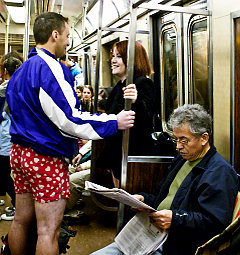DC Metro refuses to share data with Google
Three years after the launch of Google Transit, which gives directions using transit on Google Maps, and after constant requests by riders and bloggers, WMATA’s Director of Customer Service, Brett Tyler, announced their decision that participating in Google Transit is “not in our best interest from a business perspective.”
(Source: Greater Greater Washington, via Streetsblog)
Link found between “active transportation” and lean population
New research illustrates the health benefits of regular biking, walking or taking public transportation to work, school or shopping. Researchers found a link between “active transportation” and less obesity in 17 industrialized countries across Europe, North America and Australia.
[…]
Americans, with the highest rate of obesity, were the least likely to walk, cycle or take mass transit … The authors say it’s more than lifestyle choices that lead Americans to use their cars more. [Can you say “carism”?] Europe’s compact, dense layout and infrastructure are more conducive to getting around without a car.
(Source: MSNBC)
More people in NYC, but not more traffic
As the city’s economy soared and its population grew from 2003 through 2007, something unusual was happening on the streets and in the subway tunnels.
All those tens of thousands of new jobs and residents meant that more people were moving around the city, going to work, going shopping, visiting friends. And yet, according to a new city study, the volume of traffic on the streets and highways remained largely unchanged, in fact declining slightly. Instead, virtually the entire increase in New Yorkers’ means of transportation during those robust years occurred in mass transit, with a surge in subway, bus and commuter rail riders.
(Source: NYT)

